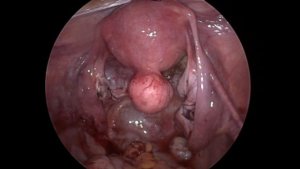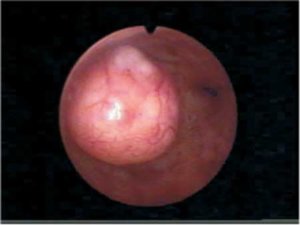Some uterine fibroids can affect a woman’s fertility
 It can be very stressful to hear you have uterine fibroids. If you have received a fibroid diagnosis and are feeling a bit freaked out, take a deep breath. While some fibroids can impact fertility, not all of them do. Plus, fibroids are extremely common. In fact, so common that approximately 50-70% of women will get a fibroid in their uterus during their lifetime. If you don’t have them, chances are that you know someone who does.
It can be very stressful to hear you have uterine fibroids. If you have received a fibroid diagnosis and are feeling a bit freaked out, take a deep breath. While some fibroids can impact fertility, not all of them do. Plus, fibroids are extremely common. In fact, so common that approximately 50-70% of women will get a fibroid in their uterus during their lifetime. If you don’t have them, chances are that you know someone who does.
Uterine fibroids, or myomas as they are scientifically called, are benign (non-cancerous) growths of muscle in the uterus. These muscle cells grow into a ball which can be seen on ultrasound. Most uterine fibroids do not require any treatment or intervention. Women who have a family history of fibroids, African American women, women who are obese, or women who eat a lot of beef can be at higher risk for fibroids.
Fibroids are distinguished mainly by where they are located in relation to the uterus

Fibroids that occur on the outside of the uterus are called subserous fibroids and may even be connected to the uterus by a stalk (penduculated). Intramural fibroids occur within the uterine muscle layer, and those that occur within the cavity of the uterus are called intracavitary fibroids. Finally, fibroids that are partially in the uterine cavity and partially in the uterine muscle are called submucous.
Doctors can visualize fibroids using a special ultrasound called a saline infusion ultrasound. This technique can determine if the fibroids are within the cavity of the uterus where the baby will need to develop. A saline infusion ultrasound is done shortly after a menstrual period. The doctor will insert some saline into the uterus while doing an ultrasound. This opens up the cavity to see where the fibroids are located.
Often fibroids are small, but sometimes they can grow very large. Large fibroids can be the source of several uncomfortable problems. Often women experience very heavy, painful periods and can bleed so much they become anemic. Large fibroids can often put pressure on the bladder or bowels, causing issues with going to the bathroom and even a back-up of urine in your kidneys. Intercourse can sometimes be painful. Women with large fibroids can look like they are a few months pregnant if the fibroids grow so large they reach the belly button. When fibroids cause bloating or put pressure on the organs, it is best to have them removed.
Fibroids that occur inside the uterine cavity can interfere with conception

Even if there are small fibroids within the inside of the uterus, they can present a potential problem for women trying to conceive. Small fibroids in the wrong area can block your fallopian tubes, preventing the egg from reaching the uterus. They also can cause inflammation and prevent an embryo from implanting into the uterus and attaching to the uterine wall. If you have a fibroid in the inside cavity of the uterus and you are trying to get pregnant, you should talk with your doctor about having it removed.
Fibroids inside the cavity of the uterus can also be blamed for some early miscarriage. Research indicates that pregnant women with fibroids are at slightly increased risk of miscarriage, premature labor and delivery, abnormal fetal position, and separation of the placenta from the uterine wall.
Surgery is the preferred way to eliminate fibroids
There are some medicines that can help shrink the fibroids, but as soon as those medications are stopped, they typically grow back. Some doctors like to use these medications for a few months before surgery to make the procedure easier and safer.
Medication will not make fibroids go away. Surgery is the only way to remove fibroids. For small fibroids inside the cavity of the uterus, they can be removed with a hysteroscopy or a camera in the uterus through the vagina. Larger fibroids can be removed with a larger incision or with a laparoscopy (camera in the belly button).
Typically, after fibroids are removed though the uterus via hysteroscopy, you can start trying for a baby right away and have a vaginal delivery. If larger fibroids are removed either with a laparoscopy or larger incision, you may need to wait a few months to try to get pregnant. A cesarean section for delivery will likely be necessary due to the weakening of the muscles after surgery.
Again, most fibroids do not need to be removed and do not cause problems. It really depends on how big they are and where they are located. Your doctor should be able to help determine what, if anything, needs to be done. Our fertility specialists can help guide you and lessen the symptoms and effects of fibroids.


